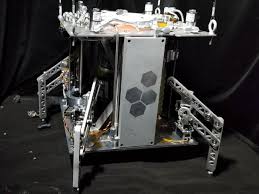
Breaking News
 LIVE ELECTION RESULTS: New York mayor, NJ & VA governor, Prop 50, Trump endorsements, latest vote
LIVE ELECTION RESULTS: New York mayor, NJ & VA governor, Prop 50, Trump endorsements, latest vote
 Sen. Markwayne Mullin Reveals Schumer Held Secret BACKROOM MEETING...
Sen. Markwayne Mullin Reveals Schumer Held Secret BACKROOM MEETING...
 RIP NYC - Muslim Communist Zohran Mamdani Wins New York City Mayoral Race
RIP NYC - Muslim Communist Zohran Mamdani Wins New York City Mayoral Race
 Dramatic Footage Shows UPS Cargo Jet Crashing At Louisville Airport
Dramatic Footage Shows UPS Cargo Jet Crashing At Louisville Airport
Top Tech News
 Japan just injected artificial blood into a human. No blood type needed. No refrigeration.
Japan just injected artificial blood into a human. No blood type needed. No refrigeration.
 The 6 Best LLM Tools To Run Models Locally
The 6 Best LLM Tools To Run Models Locally
 Testing My First Sodium-Ion Solar Battery
Testing My First Sodium-Ion Solar Battery
 A man once paralyzed from the waist down now stands on his own, not with machines or wires,...
A man once paralyzed from the waist down now stands on his own, not with machines or wires,...
 Review: Thumb-sized thermal camera turns your phone into a smart tool
Review: Thumb-sized thermal camera turns your phone into a smart tool
 Army To Bring Nuclear Microreactors To Its Bases By 2028
Army To Bring Nuclear Microreactors To Its Bases By 2028
 Nissan Says It's On Track For Solid-State Batteries That Double EV Range By 2028
Nissan Says It's On Track For Solid-State Batteries That Double EV Range By 2028
 Carbon based computers that run on iron
Carbon based computers that run on iron
 Russia flies strategic cruise missile propelled by a nuclear engine
Russia flies strategic cruise missile propelled by a nuclear engine
 100% Free AC & Heat from SOLAR! Airspool Mini Split AC from Santan Solar | Unboxing & Install
100% Free AC & Heat from SOLAR! Airspool Mini Split AC from Santan Solar | Unboxing & Install
Steam-powered spaceship could cruise the cosmos indefinitely without running out of gas

Come one, come all and behold the future of space travel: steam power!
No, seriously; half a century after the world's first manned space mission, it seems that interplanetary travel has finally entered the steam age. Scientists at the University of Central Florida have teamed up with Honeybee Robotics, a private space and mining tech company based in California, to develop a small, steam-powered spacecraft capable of sucking its fuel right out of the asteroids, planets and moons it's exploring.
By continuously turning extraterrestrial water into steam, this microwave-sized lander could, theoretically, power itself on an indefinite number of planet-hopping missions across the galaxy — so long as it always lands somewhere with H20 for the taking.
"We could potentially use this technology to hop on the moon, Ceres, Europa, Titan, Pluto, the poles of Mercury, asteroids — anywhere there is water and sufficiently low gravity," Phil Metzger, a UCF space scientist and one of the chief minds behind the steampunk starship, said in a statement. Metzger added that such a self-sufficient spacecraft could explore the cosmos "forever."
Metzger and his colleagues call the lander WINE (short for "World Is Not Enough"), and a prototype of the craft recently completed its first test mission on a simulated asteroid surface in California. Using a compact drilling apparatus, the lander successfully mined the fake comet for water, converted that H20 into rocket propellant and launched itself into the air using a set of steam-powered thrusters.



